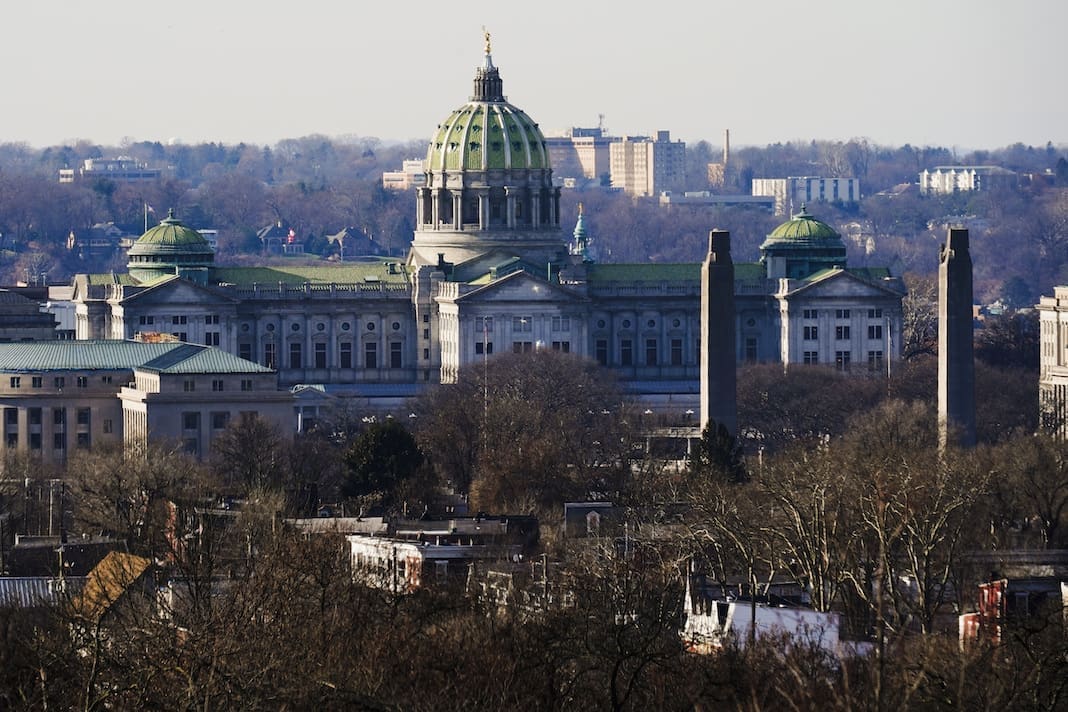PA to use Inflation Reduction Act funds to plug abandoned toxic oil and gas wells
Pennsylvania Republicans unanimously opposed the Inflation Reduction Act.

Gov. Josh Shapiro announced on Dec. 27 that Pennsylvania had received $44 million from the federal government that will be used by the Pennsylvania Department of Environmental Protection to plug oil and gas wells that are emitting methane into the atmosphere.
“By focusing on capping and plugging as many orphaned, abandoned, and marginal active wells as possible, my Administration is making real progress towards tackling greenhouse gas emissions here in Pennsylvania and creating thousands of good-paying jobs in the process,” Shapiro said in a statement.
The Shapiro administration said that the project would cap orphaned and abandoned wells along with marginal active wells.
There are more than 120,000 wells leaking potentially harmful emissions across the United States. Oil and gas companies are required to seal wells after they are no longer productive. The wells can leak methane gas, which is the second-largest contributor to greenhouse gasses that cause climate change, and can also pollute groundwater with toxic chemicals such as arsenic.
The Department of Environmental Protection is currently in the process of creating a program to provide grants for small businesses to do the work of plugging the wells.
On Dec. 15, the EPA announced that 14 states would receive funds to reduce methane emissions from low-producing well sites. Pennsylvania’s allocation of $44 million is the second-largest announced award, behind $134 million for Texas.
“Through these historic investments in America, EPA and DOE are working with states to improve the efficiency and economic competitiveness of U.S. oil and gas operations and create new jobs in energy communities, while realizing near-term emissions reductions that protect people and the planet,” Jennifer Macedonia, EPA associate deputy assistant administrator of the Office of Air and Radiation, said in a release.
The Biden administration said the project is a part of the Justice40 Initiative, the federal investment strategy it is implementing with the goal of directing at least 40% of federal spending on issues like pollution, sustainable housing, climate change and clean energy, and job training to historically disadvantaged communities.
The funds come from the Inflation Reduction Act, which President Joe Biden signed into law in 2022. The law directs a total of $514 billion in federal investments to climate technology and green energy, the largest initiative in green policy in U.S. history.
The legislation passed Congress on a party-line vote, with only Democratic support.
Pennsylvania’s entire Republican congressional delegation voted against the bill, including Sen. Pat Toomey, who has since retired. The state’s Democrats, led by Sen. Bob Casey, supported the legislation.
“This legislation is stuffed full of socialist handouts, including more than $400 billion for radical Green New Deal policies, while everyday Americans will be forced to pay more at the pump thanks to $12 billion in taxes on American energy producers,” Rep. Guy Reschenthaler said in an August 2022 statement.
In May 2021, the Pennsylvania Department of Environmental Protection released a report called “Pennsylvania Climate Impacts Assessment 2021.” The document stated that the effects of climate change had been felt across the entire state, citing significant flooding and severe heat waves. The report went on to say that climate change has had an impact on the health and economic well-being of residents.
“Risks will also continue to grow and change beyond mid-century,” the report said.




